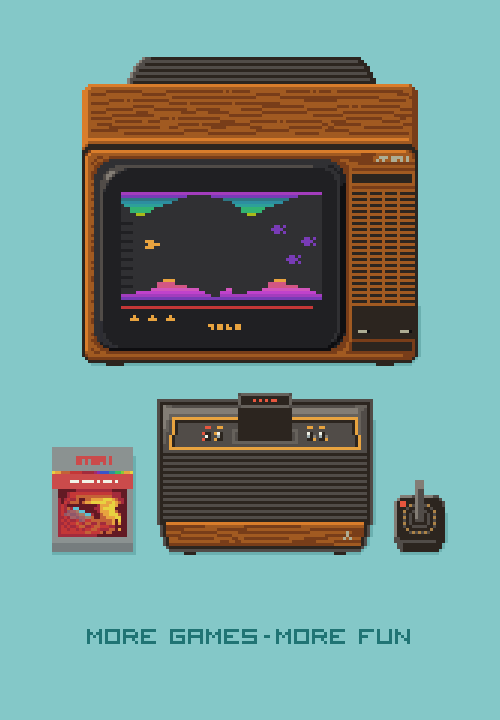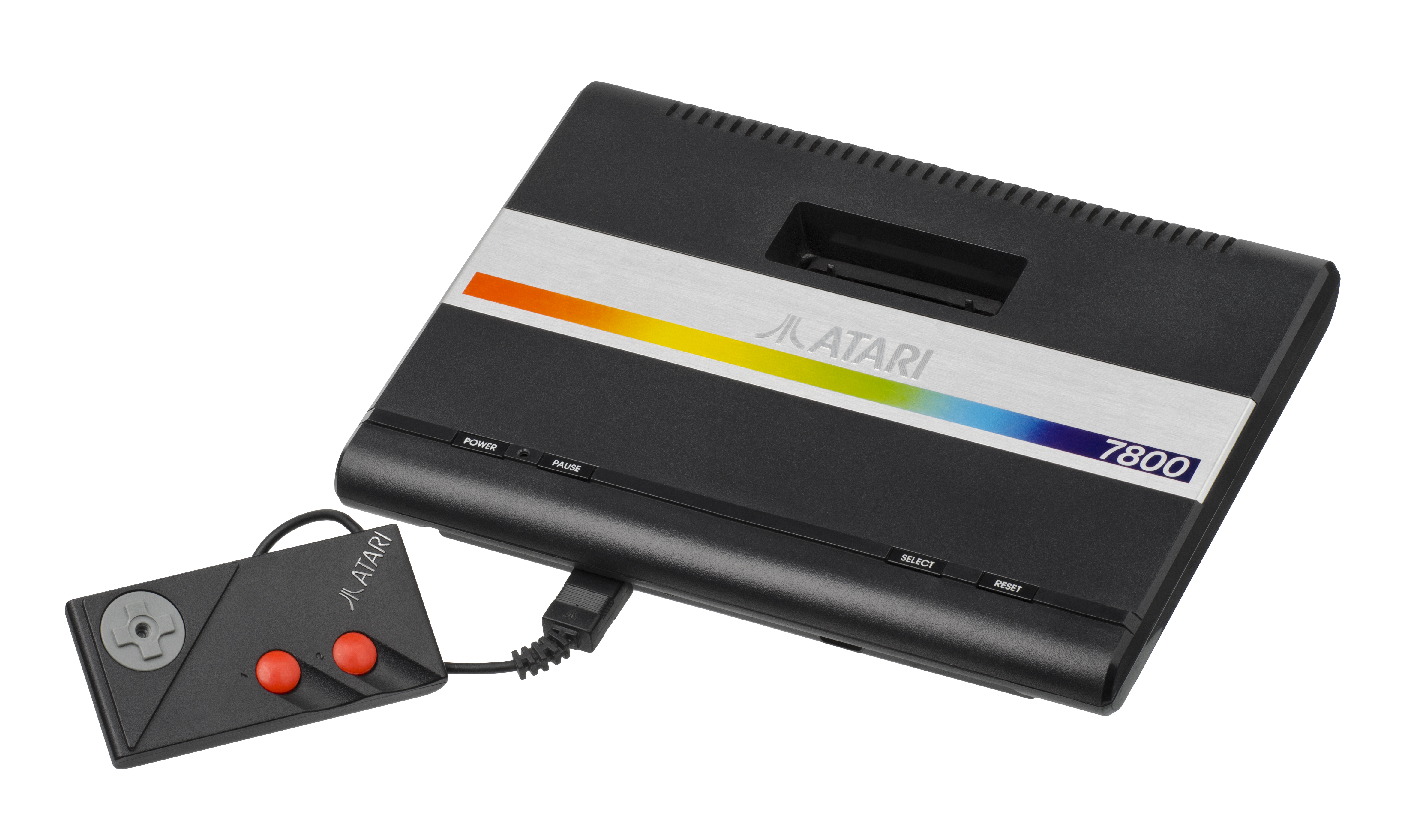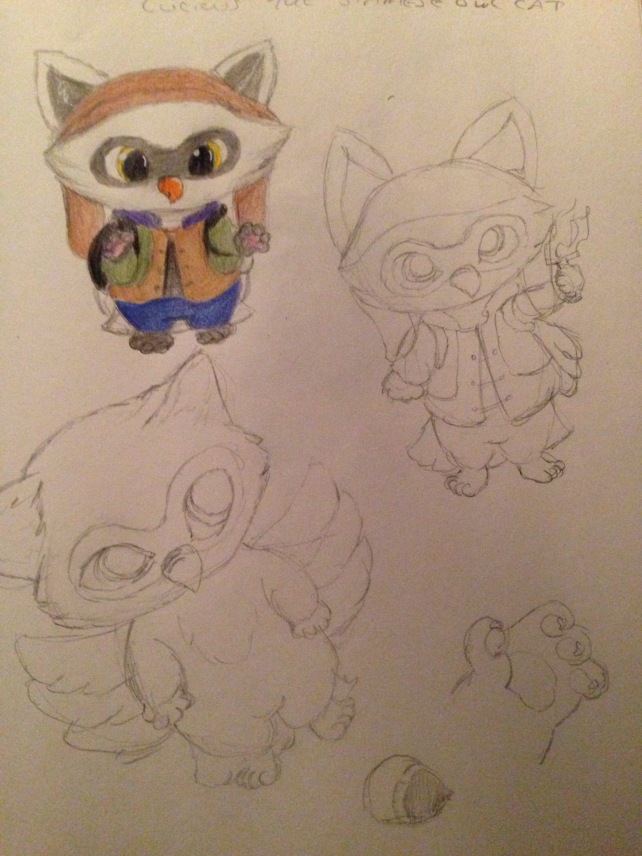
After pitching our games to the rest of the class, we have decided to make the Gobble Ghost game within our team. We had a group meeting to discuss what each person in each team will be making towards the … Continue reading


After pitching our games to the rest of the class, we have decided to make the Gobble Ghost game within our team. We had a group meeting to discuss what each person in each team will be making towards the … Continue reading
Today we pitched our halloween games to other people in our area, we chose which game should go forward to be pitched towards the class.
Two people in our group had the idea of a maze game so we went with that idea.
We developed some of the ideas, such as being able to turn the flashlight on and off, being able to find candy around the map to boost the score and having multiple enemies when the levels progress.
I blocked out a very basic design for the game, as I am not the best at programming, so I have the room, an enemy and the torch light all in the game.

When the game runs, the whole level is dark and the sprite moves around using the WASD Keys. The only way to see is to use your flash light.

I really want to try and do more with this game, however I am not good at programming and coding so I cant get the torch to rotate or the collisions to work correctly

We have been set a task to create the schools halloween game. We had to play a range of different games, then make notes on their style, gameplay and mechanics, then create ideas for our own game. I have decided … Continue reading

As part of our course, we need to analyse game design and gameplay of video games, with references to platforms and technologies of the time. And for this post, I have decided to look at Ratchet and Clank, 2002 and … Continue reading

I decided to draw Nick Valentine from Fallout 4 as part of my drawings needed for my asset portfolio. I did this in my sketch pad using crayola pencils and a range of different other pencils, from 6B to F. … Continue reading
Video games have been around since the 1950s, they were played on massive computers connected to vector displays, not analog televisions.
In October 1958, Physicist William Higinbotham created what is thought to be the first video game. It was a very simple tennis game, similar to the classic 1970s video game Pong, and it was quite a hit at a Brookhaven National Laboratory open house.

Ralph H. Baer conceived the idea of a home video game in 1951. a bulky rectangular brown wooden box with two attached controllers, and thus the name “Brown Box”. Invented by Ralph H. Baer (1922 – ), also known as “The Father of Video Games”, he developed the brown video game console such that it can be hooked up with any ordinary TV sets. There were only six simple games for the console, namely ping-pong, tennis, handball, volleyball, chase games and a light-gun game.

The demonstration of the “Brown Box” led to the licensing of the technology by Magnavox in 1972, resulting in the release of the first official home video game console – Magnavox Odyssey. Just as the earliest films do not feature recorded sound, the first video game console is silent as well, with graphics which we would consider very primitive by today’s standard.

In 1973, Atari has produced an arcade version of pong, and it was that popular that they decided to join the home video game market and made their own console two years later in 1975. The take-home version of the game that started it all, the Atari Home Pong console contained one of the most powerful computer chips in a consumer product when it was launched by Sears in 1975. The controllers were built into the console itself, allowing player’s to slide their Pong paddle up and down by rotating a single dial.
In that same year, Magnavox decided to improve its Odyssey system and released not one, but two different improved versions of the original console, the Magnavox Odyssey 100 and 200.
From 1976-77, a series of Magnavox Odyssey consoles were produced, with each new console only slightly better than the previous one. The consoles basically had the same games within, but with some modification to the graphics, controllers and digital on-screen scoring.

The Atari then included more games, such as the Video pinball, stunt cycle in order to compete with the Magnavox.
Soon after everyone wanted to join the market, with new companies such as Fairchild, RCA and Coleco creating their own consoles just like everyone else. These however, seemed to be the same as the other consoles, where the Wonder Wizard was the same as the Odyssey 300 by Magnavox, but with just having a bigger controller.

Magnavox 300

Wonder Wizard
The first of the “second generation” consoles finally moved controllers on from built-in dials and knobs. Although medicinal in appearance, the black controllers of the Fairchild Channel F were remarkably more sophisticated than the offerings of the previous generation: the thumb operated “cap” was an eight-direction joystick, which could be pushed in to fire or pulled out to… do something other than fire. The cap could also be rotated, offering the same functionality as the former generation of controllers.
While other second generation consoles were trying new and bold things with their controller designs, the RCA Studio II looked to have taken something of a backward step. The console housed two number pads that gained different control functions for each of its five inbuilt games – some of which used the numbers layout as a direction pad. It was discontinued after two years. Why the new PS4 isn’t available in a similar 70’s bathroom plastic hue is beyond us.
Then in January 1978, Nintendo joins the battle, releasing its first series of colour consoles in japan. The games followed the footsteps of the atari with similar games available to play.

During the start of the 1980’s, technology was starting to advance, meaning that the games consoles also started advancing as well. Meaning that they were finally moving on from pong style games, and began making games in other genres such as fighting, platform, adventure and RPG games. This era was able to release some of the all time classic games, sich as Pac-man (1980), Mario Bros (1983), The Legend of Zelda(1986), Final Fantasy (1987), Golden Axe (1988), etc. There was also a major shift from dedicated consoles (with built-in games) to cartridge-based video game systems.

Sega and Nintendo became the dominating companies within the video gaming scene. With Segas lesser known SG-1000 in 1983, this paved the way to their successor of the Sega Master System. The SG-1000’s game library comprises 68 standard cartridge releases and 29 Sega Card releases. All of the SG-1000’s games play on each model of the console, though 26 of the cartridge releases require the attached keyboard accessory or the SC-3000.

But soon after the Nintendo Entertainment System was released and merged victorious as the best-selling console of that generation. It is even fair to say that the NES single-handedly raised Nintendo to a company easily identified with gaming. when it was introduced to the US and UK market a year after the 1984 video game industry crash. As a result of the crash, ColecoVision ended up as the last console released by Coleco.

By the 1990’s, it was hard to shift Sega or Nintendos dominance of the games industry, each releasing new consoles to compete with the other. Sega releasing the Mega Drive/Genesis in 1988 and Nintendo releasing the SUper Nintendo Entertainment System, just for Sega to release another console just two years later. The Master System II.
This was the start of a major console war.
With the dominance of sega and nintendo, Atari slowly started slipping away, their new consoles becoming less and less popular, the only upside to their new console, was that it provided backwards compatibility.

DUring the first few years of the 90’s, a lot of consoles shifted from cartridges to discs, meaning there was an increased capacity for games. This shift in technology allowed consoles to move from 2D to 3D Graphics. This then allowed a new competitor to join the war. Playstation.

Dreamcast was the pioneer back in 1998. Two years later, Sony progressed on with the next Playstation, the Playstation 2. In 2001, Nintendo switched its cartridge-based Nintendo 64 to a DVD-ROM GameCube. That very same year, we saw Microsoft entered in the video game console industry in 2001 with its well-received Xbox.

Between 2005-2011 the current generation of video game console only has room for three major competitors: Xbox 360, Sony Playstation 3 and Nintendo Wii. With full 1080p HD graphics for both the Xbox 360 and Playstation 3, and Wii’s innovative remote for sensing 3D movements, it seems that video gaming had indeed came a long way.
Most of the companies were already phased out – Atari, Coleco, NEC, Sega, etc, but there are currently still two adventurous companies who dare to compete head-on with the Big Three. Mattel is back with its Hyperscan console after disappearing from the industry for three decades. Marketed to young boys of the age of five to nine, it was only available for a year before they were taken off the shelf in 2007. The PC World Magazine ranked it the 7th worst video game system of all time.
And finally, with the newest generation of consoles, come the Playstation 4, Wii U, 2/3DS and the Xbox One. The playstation 4 being the most sold console out of its generation, selling over 36 million units, compared to 12.6 million for the wii u and a measly 3 milion for the xbox one.
Skills Developed within animation, vfx and games design are pretty much all transferable. meaning that no matter which sector you go into, these skills all apply one way or another into the other sector.
These skills include:
Today we started making some ideas for our game jam in our bays.
The first game we came up with was a toy car racing game that would be in different rooms. This would allow us to have multiple assets and different skins for each object.
The next game idea we had was a duck racing game on water, but this then changed to a rubber duck racing game in a bath tub, and the players are able to equip weapons.
each person in the group had started creating some ideas for this game, from skin ideas, characters, concept and 3d modelling.
I started by 3D Modelling some rubber ducks.

I started off with a sphere shape and extruded out in certain places to create this blocky style rubber duck. I then added a mesh smooth onto the model and then added some basic materials onto the model to make it look like a rubber duck.



I also made a low poly style bathtub.



Today I really wanted to redraw the character Lucious from our previous game, and so drew a few new sketches of him.
The new sketches,I think, look a lot nicer than my previous ones.
I made his eyes a lot bigger than before. He is a bit shorter and fatter than before as well but I feel as though this is better in his design.